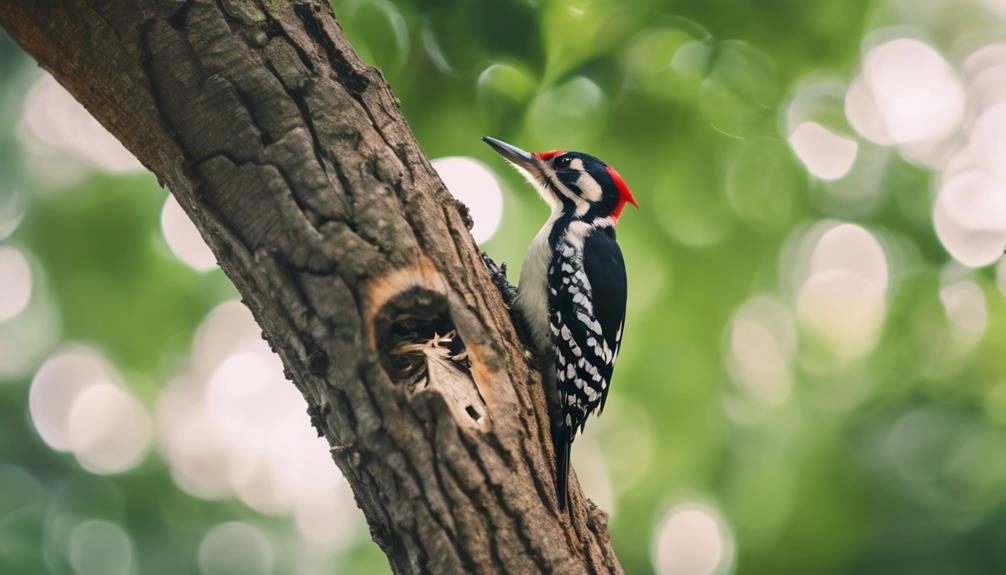Modern Symbols and Signs
Why Are Road Signs Blue?
Startlingly blue road signs serve a crucial purpose in enhancing driver safety and visibility – discover the intriguing reasons behind this color choice.

Blue road signs are blue to enhance driver safety, visibility, and international standards. They originated in Europe for motorway signage in 1939 and evolved into a global standard. The color promotes calmness, trust, and reliability, reducing stress for drivers. Blue signs help drivers focus, stand out for better visibility, and align with safety regulations. They incorporate innovative technologies like LED displays for improved traffic management. Blue signs aid navigation, offer real-time updates, and support eco-friendly initiatives. Understanding the reasons for blue signage can expand your knowledge of road safety and design.
Key Takeaways
- Blue road signs are associated with calmness and trust, promoting a sense of reliability for drivers.
- Blue signs enhance visibility, aid in reducing stress, and contribute to overall road safety.
- Blue color is standardized globally for road signage, ensuring clarity and easy recognition.
- Blue signs comply with international standards, emphasizing uniformity and consistency in conveying essential information.
- Innovative uses include LED displays and sustainability features, improving user experience and supporting eco-friendly initiatives.
Historical Origins of Blue Road Signs
The historical origins of blue road signs date back to the introduction of these signs in the US in 1939 for enhanced readability and visibility. Blue signs play an important role in guiding road users to various services, providing essential information about tourist spots, and even indicating evacuation routes during emergencies. The United States follows strict standards set by the Manual on Uniform Traffic Control Devices (MUTCD) to guarantee consistency in the use of blue for road signs.
In addition to their role in public infrastructure, blue signs are also used for private drives, roadways through private property, and some city street names. Remarkably, in Los Angeles, the Bureau of Engineering designs blue street signs that are still in use today. Understanding the historical significance of blue road signs helps us appreciate the thought and planning behind their implementation, ultimately contributing to safer and more organized road systems.
Psychological Impact of Blue Signs

Blue road signs exert a calming influence on drivers, fostering a sense of safety and reducing stress on the road. The psychological impact of these signs is significant, as the color blue is associated with trust, reliability, and efficiency. Research suggests that blue signs are ideal for conveying important information quickly and effectively. By using blue for road signs, drivers can easily distinguish them from other colors, aiding in the quick recognition and processing of vital road-related information. This, in turn, helps improve driver focus and attention on the road.
Moreover, the use of blue signs for road user services helps create a clear and consistent system for communicating essential services and directions to drivers. The sense of order and reliability that blue signs promote contributes to overall road safety. Drivers feel more at ease and confident when they encounter blue road signs, knowing that they're receiving accurate and trustworthy information to guide them on their journey.
Safety and Visibility of Blue Signs
Enhancing driver safety and visibility on the road, blue signs are strategically selected for their high visibility and easy recognition, particularly in daylight and clear weather conditions. The color blue, known for its calming effect and association with trust, plays an important role in conveying road user services and tourist information effectively.
By standing out from the typical red, yellow, and white signs, blue signs help drivers quickly identify important services, evacuation routes, and recreational facilities, thus improving road safety. These signs are standardized by the FHWA to guarantee consistency in design and information across different regions and states, promoting a sense of familiarity and reliability among drivers.
Aligning with international standards, the use of blue road signs not only enhances visibility but also plays a crucial role in effectively communicating essential information to drivers, contributing significantly to overall road safety. Trust in the standardized blue signs enables drivers to navigate roads with confidence and clarity, ensuring a safer driving experience for all.
International Standards for Blue Signage

Adhering to international standards, blue road signs are designed to convey important information efficiently and consistently. Blue signage plays a vital role in guiding road users and ensuring their safety. To maintain uniformity and clarity in road signage, the following aspects are considered:
- Uniform Traffic Control Devices: Blue signs adhere to the standards set by the Uniform Traffic Control Devices to guarantee consistency in design and messaging across different regions.
- Manual on Uniform Traffic: The Manual on Uniform Traffic Control Devices provides guidelines for the use of blue signs, ensuring that they effectively communicate road user services and other essential information.
- Federal Highway Administration: The Federal Highway Administration mandates the use of specific sign colors, including blue, to convey particular types of information on road signs.
- Road User Services: Blue signs are specifically used to indicate road user services, tourist information, evacuation routes, and other important details, helping drivers navigate roads safely and efficiently.
Innovative Uses of Blue Road Signs
Blue road signs guarantee more than just markers along the road; they serve important safety functions. Their distinct color makes them easily visible in all weather conditions, aiding drivers in navigation.
Safety Features of Blue Signs
With a focus on safety and convenience, blue road signs offer a range of innovative uses beyond traditional traffic guidance. Blue signs play an essential role in conveying essential information to drivers and ensuring efficient traffic flow. Here are four safety features of blue signs:
- Enhanced Visibility: The distinct blue background of these signs makes them stand out against the surroundings, improving visibility for drivers even in challenging conditions.
- Standardized Information: Blue signs follow strict standards set by traffic control authorities, ensuring consistency in the information provided to drivers, making it easier for them to interpret and act upon.
- Quick Identification: Drivers can quickly identify important services, tourist spots, and emergency routes through the use of blue signs, aiding in making timely decisions on the road.
- Improved Traffic Management: By clearly indicating motorist services, recreational areas, and evacuation routes, blue road signs contribute to better traffic management, leading to enhanced safety on the roads.
Visibility in All Weather
In various weather conditions, blue road signs play a significant role in enhancing visibility for drivers on the road. Blue is a highly visible color that stands out against different backgrounds, making it easier for drivers to spot important information quickly.
The MUTCD standardizes blue road signs to guarantee consistency and effectiveness in conveying messages about road user services, tourist information, and evacuation routes. These signs are vital in indicating motorist services, recreational facilities, and emergency notifications on roadways.
Consistency Across Regions
Our road signage system thrives on the consistent use of blue signs, ensuring uniformity and effectiveness in guiding road users across different regions. Blue traffic signs offer a standardized approach for various road user services, tourist information, and evacuation routes.
The innovative uses of blue signs extend beyond traditional traffic regulations to include indicating private roads, street names, and country road services. In the USA, blue signs adhere to strict standardization governed by the Manual on Uniform Traffic Control Devices, guaranteeing consistency nationwide.
States like Texas leverage blue signage for Tourist-Oriented Directional Signs, promoting rural businesses and enhancing the overall road navigation experience. Los Angeles has utilized blue street signs since 1939 for private drives and roadways, emphasizing readability and longevity.
Future Trends in Blue Sign Design

As we explore the future trends in blue sign design, one can anticipate enhanced visibility and real-time updates integrating smart technology. The evolution of blue sign design is moving towards incorporating sustainable practices, such as using eco-friendly materials and energy-efficient lighting options. These advancements not only guarantee the environment but also secure that road signs remain clear and visible for drivers at all times.
In addition to sustainability, interactive elements are becoming a key aspect of future blue sign design. These interactive features won't only enhance user engagement but also provide valuable navigation assistance to drivers, making their journeys safer and more convenient. By incorporating smart technology, blue signs will be able to offer real-time updates on road conditions and available services, further improving the overall road user experience.
Frequently Asked Questions
Why Are Street Signs Blue?
We see street signs are blue for specific reasons. Blue circular signs guide us about lanes or routes, while rectangular ones offer directions and information.
This color choice isn't random; it's set by the Manual on Uniform Traffic Control Devices (MUTCD). The USDOT's Federal Highway Administration (FHWA) issues these blue signs to standardize traffic rules for everyone's safety and clarity on the road.
What Do Blue Road Signs Show?
Blue road signs play a vital role in indicating road user services, tourist information, and evacuation routes. Circular blue signs provide lane or route instructions, while rectangular signs offer directions and essential details. These signs are standardized by the Manual on Uniform Traffic Control Devices for Streets and Highways (MUTCD) issued by the Federal Highway Administration.
Blue road signs are essential for indicating route markers, motorist services, emergency notifications, and some city street names.
What Does a Blue Stop Sign Mean?
A blue stop sign typically indicates special use or information ahead rather than a regular stop. It's essential to carefully read the shape and wording on the sign to understand its specific meaning.
Blue signs are commonly used for road user services, tourist information, and evacuation routes. While blue stop signs aren't standard across the US, they may be employed in specific locations or for temporary purposes.
Pay attention to these unique signs to stay safe on the road.
Why Are Road Signs Different Colours?
Different colored road signs serve specific purposes to guide drivers. For example, red signs indicate prohibitions or warnings, while green signs offer directional guidance. Yellow signs warn about hazards, and blue signs provide information about services and destinations.
Understanding these color codes can help drivers navigate safely and effectively. Mastering the meanings behind various road sign colors is essential for being a responsible and knowledgeable driver on the road.
Conclusion
In summary, blue road signs have a long history and play a vital role in guiding and informing drivers on the road.
Did you know that in the United States, blue signs are used to indicate services such as rest areas and hospitals, making up only 2% of all road signs?
Remember to pay attention to these important blue signs while driving to guarantee your safety and reach your destination smoothly.
Robert, Research Specialist—Robert specializes in visual explorations and brings a keen eye for detail to our research team. He delves into the historical and cultural backgrounds of symbols to present deeply researched content beautifully, making the old and mystical accessible to a modern audience.
Modern Symbols and Signs
Mastering Tumble Dry: Complete Meaning Guide
Take control of your tumble dryer with expert tips and tricks to ensure your clothes come out fresh and lasting longer.

Talking about tumble dryers, knowing the ins and outs **keeps clothes fresh** and extends their life. Learning how they work, the best settings, and the perks matters a lot. Rotating drums and adjustable heat levels make drying quick, even when outdoor space is tight. **Tumble dryers** cut down the drying time, **reduce wrinkles**, and ensure clothes stay soft. Picking the right settings for different fabrics avoids damage and boosts performance. High heat works for heavy stuff, while low heat is best for delicate fabrics. Always check garment tags for the right settings. **Discover more tips** to master tumble drying for your laundry needs.
Key Takeaways
- Understand fabric care labels for proper settings.
- Choose heat levels based on fabric type.
- Efficient drying saves time and reduces wrinkles.
- Proper operation extends garment lifespan.
- Check garment tags for recommended settings.
Definition of Tumble Dry
Tumble dry refers to using a machine for drying clothes rather than air drying. This method of drying laundry has become a popular choice due to its convenience, speed, and efficiency in the care of clothes.
By subjecting the items to heat within the dryer, the clothes come out clean, dry, and ready to wear. Tumble drying also helps in achieving soft, warm garments with fewer wrinkles compared to air drying.
Understanding when and how to tumble dry is essential for maintaining the quality of your clothes while saving time in the laundry process. Properly reading fabric care labels and selecting the appropriate settings on the dryer are vital steps in effective tumble drying.
Tumble Dryer Overview

In our daily laundry routines, a tumble dryer plays a crucial role in efficiently drying our clothes. Tumble drying involves using a machine with a rotating drum to dry various laundry items. This method offers customizable settings for heat levels and drying times, allowing for gentle drying of delicate fabrics and quicker drying of heavier materials. The convenience of tumble drying makes it a common household practice, especially for those with limited outdoor space.
Let's explore a table highlighting the key features of tumble dryers:
| Feature | Description |
|---|---|
| Rotating Drum | Efficiently tumbles laundry items for even drying |
| Heat Levels | Customizable settings for different materials and heat preferences |
| Drying Times | Allows for quick drying, reducing overall laundry time |
| Electricity or Gas | Utilizes either electricity or gas to generate heat for effective drying |
| Efficiency | Efficient method, particularly in areas with limited outdoor drying space |
Tumble dryers are not only efficient but also save time and effort, making them an indispensable appliance in modern households.
Benefits of Tumble Drying

Tumble drying provides quick drying times, saving us precious minutes on laundry days.
It also reduces the potential for wrinkling, giving our clothes a fresh and neat appearance.
With tumble dryers, we can enjoy efficiently dried garments regardless of the weather outside.
Quick Drying Times
With tumble drying, clothes are ready to wear in a fraction of the time it takes with air drying, making it a convenient solution for those with busy schedules and frequent laundry needs. The quick drying times offered by tumble dryers reduce the waiting period for freshly washed clothes, ensuring faster drying cycles.
This importance is vital for achieving soft and wrinkle-free garments promptly. Tumble drying benefits extend to enhancing overall laundry efficiency by providing garments that are ready to wear sooner.
The heat and airflow in tumble dryers work together to efficiently remove moisture from the clothes, making this method a reliable choice for those looking to achieve quick drying times without compromising on the quality of their laundry.
Reduced Wrinkling Potential
Utilizing heat and airflow in the drying process, tumble dryers effectively reduce the potential for wrinkles in clothing. The rotating drum inside the dryer plays an essential role in evenly drying fabrics and preventing clothes from bunching up, ultimately aiding in crease prevention.
By quickly drying clothes, tumble dryers help minimize the formation of deep-set wrinkles in fabrics, resulting in smoother garments with a more wrinkle-free appearance. The combination of heat and tumbling action not only reduces wrinkling but also enhances the fabric feel, leaving clothes softer and more comfortable to wear.
Mastering the art of tumble drying can lead to garments that look and feel better, showcasing a wrinkle-free and polished appearance.
Tumble Dryer Operation

Efficiently drying clothes in a tumble dryer involves utilizing the heat and airflow within the rotating drum to sanitize and evenly dry various fabrics and materials. The air circulation helps in moisture absorption, ensuring effective drying while maintaining fabric care.
When operating a tumble dryer, it's important to take into account the heat settings to prevent damaging delicate items. Understanding the tumble dry symbol on garment care labels is essential for selecting the appropriate setting. By utilizing the right heat setting, you can achieve wrinkle-free results and prevent excessive shrinkage.
The rotating drum converts moisture into steam, aiding in the drying process. Mastering the operation of your tumble dryer won't only save you time but also ensure your laundry is soft, sanitized, and efficiently dried. Remember, proper operation leads to better fabric care and extends the lifespan of your clothes.
Tumble Dry Settings Guide

Understanding heat levels is crucial when it comes to tumble dry settings, in order to properly care for different fabrics. Heat settings can impact the longevity of your clothes, so be sure to check fabric tags for recommended settings.
Delicate fabrics may require lower heat levels, while heavier items might benefit from high heat for efficient drying.
Heat Levels Explanation
To effectively dry various types of garments, understanding the different heat levels in tumble dryers is important. High heat settings are suitable for drying cotton and heavy items efficiently, while low heat settings are ideal for delicate fabrics to prevent damage. No heat settings are used for air fluffing and preventing shrinkage. Heat settings are vital for maintaining fabric quality and extending clothing lifespan. Checking garment tags for recommended heat settings ensures proper care and efficient drying in tumble dryers.
| Heat Settings | Ideal For | Purpose |
|---|---|---|
| High Heat | Cotton, Heavy Items | Efficient Drying |
| Low Heat | Delicate Fabrics, Items with Embellishments | Prevent Damage |
| No Heat | Air Fluffing, Preventing Shrinkage | Maintaining Fabric Quality |
Fabric Care Tips
Let's guarantee our garments are well cared for by understanding the fabric care tips for tumble dry settings. To make sure the best care, always check garment tags for recommended settings such as low heat for delicate fabrics and high heat for cotton and heavy items.
Utilize air drying or air fluff options to prevent shrinkage and maintain fabric quality. Following fabric care labels meticulously is key to preventing damage and preserving your clothes.
Separate delicate items to dry them appropriately, safeguarding them from shrinking or fabric damage. It's important to comprehend and apply specific tumble dry settings based on fabric types for effective and efficient drying while extending the lifespan of your garments.
Alternatives to Tumble Drying

Considering the environmental impact of tumble drying, exploring alternative methods for drying clothes can be beneficial both for energy conservation and garment care.
Air drying is a simple and energy-efficient alternative that involves hanging clothes indoors or outdoors to dry naturally. Indoor drying racks or clotheslines are convenient options for those looking to avoid the energy consumption of a dryer while still effectively drying their clothes.
Wrinkle release sprays offer a quick and easy solution for freshening and de-wrinkling clothes without the need for tumble drying.
Another alternative is steaming clothes using a handheld steamer or in a steamy bathroom while showering. This method not only helps reduce wrinkles but also refreshes garments efficiently.
Frequently Asked Questions
What Do the Settings on a Tumble Dryer Mean?
The settings on a tumble dryer determine factors like heat levels and drying times to suit different fabrics. High heat is for cotton, low heat for delicate items, and no heat for fluffing. Checking garment tags for guidance is essential to prevent damage.
Understanding these settings is key to prolonging clothes' lifespan and ensuring proper care. Each setting serves a specific purpose, from preventing shrinkage to maintaining fabric quality and effective drying for diverse materials.
What Do the Symbols on a Tumble Dryer Mean?
When we see symbols on a tumble dryer, it's like deciphering a secret code for fabric care. The circle inside a square tells us we can tumble dry the item, while the dots inside reveal the heat level. More dots mean higher heat.
But beware the cross, which signals 'no tumble dry' to prevent damage like shrinking. Mastering these symbols is essential for proper garment care.
What Dryer Setting Is Equivalent to Tumble Dry?
When we talk about the dryer setting equivalent to tumble dry, we're referring to the cycle with the tumble dry symbol, which is usually represented by a square with a circle inside. This setting combines heat and airflow in a rotating drum to efficiently dry clothes. It often includes various heat levels to accommodate different fabrics.
Choosing the right tumble dry setting is essential for maintaining clothes' quality and ensuring effective drying.
What Does Tumble Dry Mean on a Dryer?
Tumble dry on a dryer means using the machine to efficiently and quickly dry clothes. It involves placing laundry items in a rotating drum that circulates warm air to remove moisture.
Different heat settings like high, low, or no heat can be chosen based on the fabric type. Tumble drying helps achieve soft, wrinkle-free clothes without the need for outdoor drying space.
Is There a Connection Between Mastering Tumble Dry and Woke Culture?
Mastering tumble dry is a useful skill, but is there a connection to understanding woke culture meaning? It’s important to recognize how different aspects of life intersect, including household chores and social awareness. Having a broader understanding of woke culture meaning can lead to a more thoughtful approach to everyday tasks.
Conclusion
To sum up, mastering tumble dry is like learning to dance: it may seem tricky at first, but with practice and the right moves, you'll be twirling through your laundry like a pro.
So, don't be afraid to experiment with different settings and techniques to find what works best for you.
With a little patience and persistence, you'll soon be a tumble drying expert!
Robert, Research Specialist—Robert specializes in visual explorations and brings a keen eye for detail to our research team. He delves into the historical and cultural backgrounds of symbols to present deeply researched content beautifully, making the old and mystical accessible to a modern audience.
Modern Symbols and Signs
Understanding Caliente Meaning: Unlocking the Heat
Wade into the diverse world of 'caliente' meanings, where fiery temperatures and seductive qualities intertwine, sparking curiosity and intrigue.

Talking about the **vibrant word** 'caliente,' reveals a colorful mix of meanings, from hot temperatures to alluring traits. In Spanish, 'caliente,' stands for heat, spiciness, beauty, and even anger. Knowing these shades is key for **better communication**, given how it shows up in different scenarios. Describing a blazing summer day or a heated debate, 'caliente,' covers a range of feelings and situations. By embracing the **many sides** of 'caliente,', we dig into the rich layers of language and culture. Discovering 'caliente,' opens up a world of deeper meaning and dynamic use.
Key Takeaways
- 'Caliente' signifies heat, anger, fever, sexual excitement, and warm environments.
- The word's versatility allows it to describe diverse emotions and situations accurately.
- Special expressions like 'en caliente' and 'línea caliente' demonstrate its varied meanings.
- 'Caliente' can be used to describe politically charged situations.
- Understanding 'caliente' is crucial for effective communication in Spanish.
Cultural Significance of 'Caliente'
Have you ever wondered about the cultural significance of the word 'Caliente'? In Spanish, 'caliente' carries various meanings depending on the context in which it's used. One of the key cultural significances of 'caliente' lies in its association with heat, whether in reference to spicy food or physical temperature. In Spanish-speaking countries, the word 'caliente' can also be used to describe something as sexually attractive, adding a layer of complexity to its cultural connotations.
Understanding the cultural nuances of 'caliente' is important to avoid misunderstandings, as the word's different interpretations can lead to confusion in communication. In many Latin American cultures, the term 'caliente' is used with caution due to its potential to convey inappropriate or offensive messages. Awareness of these cultural subtleties is essential for effectively handling conversations and interactions en el día a día. By recognizing the multifaceted meanings of 'caliente', individuals can use the word appropriately and respect the diverse cultural contexts in which it's employed.
Multiple Meanings of 'Caliente'

Exploring the diverse interpretations of 'Caliente' reveals its multifaceted nature in conveying emotions, conditions, and characteristics. In Spanish, 'caliente' can depict anger, fever, sexual excitement, delicate situations, and warm places. The word's versatility allows it to describe something warm to the touch, a dangerous place, a fever, or even a warm location. Special expressions like 'en caliente' for immediate action and 'línea caliente' for a hotline are closely associated with this term. For instance, political situations can be described as 'calientes,' or Spain can be referred to as 'super caliente' in August. Understanding the various meanings of 'caliente' is essential for effective communication in Spanish, as the word can encompass a wide range of emotions and contexts.
| Emotions | Conditions | Characteristics |
|---|---|---|
| Anger | Fever | Warmth |
| Excitement | Delicate Situations | Danger |
| Sensuality | Hot Location | Urgency |
Common Phrases With 'Caliente'

Let's explore some frequently used phrases incorporating the word 'Caliente'.
When someone says 'Está caliente,' they could be referring to something being physically hot, like food or a surface.
'¡Qué caliente!' is an expression used to convey surprise or shock.
Another common phrase is 'ponerse caliente,' which means to get heated or angry.
In a more playful context, 'estar caliente' can mean to be in the mood or feeling sexually aroused.
'Caliente para el verano' is a phrase often used to describe the scorching heat of summer.
Additionally, 'un debate caliente' refers to a heated debate or discussion where emotions run high.
Understanding these phrases and their nuances is important for grasping the various interpretations of 'caliente'.
Para el siguiente subtema, we'll explore how to avoid misinterpretations with the word 'caliente'.
Avoiding Misinterpretations With 'Caliente'

To navigate potential misunderstandings when using the word 'caliente', it's essential to grasp its diverse connotations accurately. 'Caliente' can carry meanings such as anger, fever, sexual excitement, warmth, and delicate situations. When not used correctly, these nuances can lead to confusion in communication.
It's pivotal to contemplate the context carefully to guarantee the intended message is conveyed accurately. Misinterpretations, like Matt's translation mistake, underscore the significance of cultural awareness in language usage to avoid awkward situations. Seeking guidance from native speakers and practicing language skills can greatly assist in mastering the subtleties of 'caliente' and preventing misconceptions.
Embracing the Diversity of 'Caliente

Understanding the intricate meanings of 'caliente' requires a nuanced grasp of its diverse connotations to effectively communicate without misinterpretation. 'Caliente' presents a rich tapestry of meanings that are essential to comprehend for accurate expression. When maneuvering the varied interpretations of 'caliente,' it's vital to acknowledge its multifaceted nature:
- Recognizing 'caliente' as warmth, anger, fever, or sexual excitement is fundamental for precise communication.
- Understanding the contexts where 'caliente' can describe something warm, a dangerous situation, or a warm place is key to conveying intended messages.
- Exploring special expressions like 'en caliente' for immediate action or 'línea caliente' for a hotline showcases the versatility of 'caliente' in different scenarios.
- Observing examples of 'caliente' in use, such as describing a political situation as 'caliente' or Spain being 'super caliente' in August, highlights the word's diverse applications and nuances.
Embracing the diversity of 'caliente' allows for a thorough understanding of its intricate meanings and enables effective communication in various contexts.
Frequently Asked Questions
What Is the Meaning of Caliente?
We recognize the importance of the word 'caliente' and its various meanings. It can refer to heat in terms of temperature, spiciness, anger, or even sexual excitement. Context is key when using this word to avoid misunderstandings.
It's essential to grasp both the literal and colloquial interpretations to communicate effectively. Mastery of caliente involves knowing its nuances and selecting the right translation for each situation to convey the intended message accurately.
Can You Use Caliente for Weather?
Yes, we can use 'caliente' for weather. It's a versatile term in Spanish, commonly used to describe hot temperatures. When discussing the weather, 'caliente' effectively conveys the heat of the climate.
Its straightforward nature makes it an ideal choice for expressing high temperatures. In Spanish-speaking regions, people frequently use 'caliente' to describe warm weather conditions.
How Do You Say Hot in Mexican Slang?
Sure, in Mexican slang, the word for ‘hot' is 'caliente.' It can refer to temperature, spiciness, or attractiveness. Understanding the context is essential to using 'caliente' correctly.
Learning these nuances helps avoid misunderstandings. 'Caliente' has various meanings in different situations, making it versatile in Mexican Spanish.
Can You Use Caliente to Describe a Person?
Yes, we can use 'caliente' to describe a person. It indicates physical attractiveness or sexiness, often in a colloquial manner.
However, it's important to understand the cultural nuances and potential implications of using this term. Consider the context and tone when describing someone as 'caliente' to avoid misunderstandings.
Understanding the connotations behind such words is essential to convey the intended message appropriately.
Can you explain the meaning of “caliente” in relation to the concept of unlocking heat?
“Caliente” is a Spanish word that translates to “hot” in English. In relation to the concept of unlocking heat, “caliente” refers to the sensation of intense warmth or passion. Whether it’s the sizzle of spicy food or the meaning behind a kiss from a rose, “caliente” embodies a fiery intensity.
Conclusion
To sum up, grasping the true essence of 'caliente' is like unleashing the fiery passion within. It's a term that encapsulates layers of heat, intensity, and excitement, infusing a hint of spice into our language.
So next time you hear someone use 'caliente', remember that it's not just about the temperature – it's about embracing the sizzle of life. Let the heat of 'caliente' awaken your senses and bring a little extra flavor to your world.
Robert, Research Specialist—Robert specializes in visual explorations and brings a keen eye for detail to our research team. He delves into the historical and cultural backgrounds of symbols to present deeply researched content beautifully, making the old and mystical accessible to a modern audience.
Modern Symbols and Signs
How to Unlock the Meaning of Woodpeckers
Fathom the symbolism of woodpeckers to uncover hidden wisdom and insights that will intrigue and enlighten you.

To find out what woodpeckers mean, check out their **symbolism**. They stand for **communication**, determination, and wisdom. Native Americans say they bring joy and unity. Woodpeckers show how to adapt and grab chances. They represent personal **growth** and toughness. Connecting with their spirit boosts communication and stability. Their messages push for effective talking and being real. Learning about woodpeckers opens a world of wisdom and connections.
Key Takeaways
- Understand woodpeckers as symbols of communication, determination, and wisdom.
- Learn from their drumming behavior: focused intention and persistence.
- Recognize woodpeckers as signs of opportunities, overcoming obstacles, and abundance.
- Embrace effective communication, resourcefulness, and clear expression.
- Use woodpeckers as inspiration for authenticity and personal growth.
Understanding Woodpecker Symbolism
Woodpecker symbolism encompasses communication, determination, and wisdom. In the Native American Zodiac, woodpeckers are viewed as symbols of joy and kinship. These birds hold a significant place in Native American culture, representing positivity and unity within communities. The woodpecker's presence is believed to bring a sense of happiness and togetherness to those born under its sign. Individuals associated with the woodpecker in the Zodiac are often seen as communicative, determined, and wise, embodying the qualities that these birds symbolize.
According to Native American beliefs, woodpeckers also encourage emotional balance, clear communication, and the ability to recognize opportunities. Those guided by the woodpecker are thought to have a strong sense of purpose and determination in their pursuits. By embracing the traits associated with woodpeckers, individuals can enhance their communication skills, tap into their inner wisdom, and navigate through life's challenges with resilience and grace.
Embracing Change and Growth

As we explore the theme of Embracing Change and Growth, it becomes evident that woodpeckers symbolize the transformative power of overcoming obstacles and seizing opportunities. Woodpeckers show us how to adapt to new things by turning challenges into stepping stones for growth. Their rhythmic drumming echoes the Earth's heartbeat, reminding us of the importance of embracing change with resilience.
When we encounter a woodpecker, it serves as a powerful symbol to tap into our inner strength and face life's obstacles head-on. These birds connect us to nature, emphasizing the need for balance and harmony during times of transformation. Observing a woodpecker in action encourages us to approach life with enthusiasm, determination, and passion, essential elements for personal growth.
Embracing change and growth, like the woodpecker does, allows us to navigate challenges and embrace new beginnings with grace and strength.
Exploring Personal Transformation

Exploring the depths of personal transformation reveals an intricate tapestry of growth and resilience, woven through the threads of our experiences and choices. Woodpeckers symbolize the journey of personal evolution, offering valuable lessons for those seeking to embrace change and cultivate inner strength. As we investigate the domain of personal transformation, we encounter a path filled with opportunities for growth and self-discovery. Here are some key aspects to ponder:
- Adapting to the new: Just as woodpeckers adjust to changing environments, we too must learn to adapt to the shifts and challenges life presents.
- Embracing resilience: Woodpeckers remind us of the importance of resilience and determination in overcoming obstacles.
- Tapping into inner strength: Like a Woodpecker Spirit Guide, we can access our inner reservoir of strength and courage to navigate transformation.
- Fostering growth: Observing woodpeckers can inspire a renewed sense of growth and possibility within us.
- Navigating change with grace: Connecting with nature and the wisdom of woodpeckers can guide us in gracefully maneuvering the winds of change on our journey of personal transformation.
Connecting With Woodpecker Spirituality

Delving into the spiritual world, we uncover the profound connections that woodpeckers foster within our inner being. Woodpeckers symbolize communication, resourcefulness, and opportunity in spiritual contexts. They're linked to the Heart and Root Chakras, encouraging effective communication and stability.
Woodpecker totems highlight the importance of recognizing opportunities, fostering clear communication, and maintaining emotional balance. When woodpeckers hammer, it's a sign to pay attention to the messages they bring. These birds urge us to improve our communication skills, break through barriers, and appreciate the blessings in our lives.
In Native American and Indian symbolism, woodpeckers are viewed as fortunate symbols of joy, communication, and kinship. By connecting with the spirituality of woodpeckers, we can tap into their wisdom and guidance, enhancing our spiritual journey and fostering a deeper understanding of the world around us.
Unlocking the Messages of Woodpeckers

Woodpeckers communicate important messages through their drumming behavior, symbolizing focused intention and persistence. When a woodpecker drums within the tree, it's not just making noise; it's actually sending a message. Here are some key points to ponder when deciphering the messages of woodpeckers:
- Woodpeckers signify communication, determination, and wisdom.
- Their drumming behavior represents focused intention and persistence.
- Woodpeckers are associated with opportunities, overcoming obstacles, and abundance.
- They inspire effective communication, resourcefulness, and clear expression.
- Connecting with woodpeckers encourages embracing authenticity and personal growth.
The next time you hear a woodpecker drumming away, remember that it's not just a random sound. The woodpecker is reminding us to pay attention to the messages around us, to persist in our endeavors, and to seek out something new and meaningful in our lives.
Frequently Asked Questions
What Do Woodpeckers Symbolize Spiritually?
Woodpeckers symbolize communication with the spiritual domain, tapping into higher wisdom. They represent perseverance, determination, and overcoming obstacles. The birds emphasize rhythm, balance, and harmony in spiritual growth.
Serving as messengers, woodpeckers guide individuals towards transformation and self-discovery. Observing them can lead to insights about embracing change, adaptability, and resilience in spiritual journeys.
What Do Woodpeckers Represent in the Bible?
Woodpeckers aren't directly mentioned in the Bible, but some interpret them as symbols of perseverance and hard work. Their pecking behavior may symbolize persistence in faith and breaking through barriers.
While not explicitly biblical, woodpeckers can represent God's provision and care in nature. In a spiritual context, they serve as reminders of the value of persistence and overcoming obstacles in one's journey of faith.
What Does It Mean When You See a Woodpecker Pecking?
When we see a woodpecker pecking, it typically signifies the bird is searching for food or establishing its territory.
The rhythmic drumming sound they create serves as a form of communication.
Woodpeckers have adapted skulls that protect them from brain injury while pecking.
This behavior is vital for their survival and reproduction, making it an essential part of their daily routine.
What Does It Mean When You See a Red Headed Woodpecker?
When we spot a red-headed woodpecker, we're witnessing a symbol of passion, vitality, and energy. Its vibrant red head embodies inner fire and the pursuit of passions, reminding us to embrace enthusiasm and determination in life.
In Native American beliefs, this woodpecker is a spiritual messenger, offering guidance and protection. Encountering it signifies a connection to the spiritual domain, urging us to follow our passions and stay determined in our pursuits.
Can the Meaning of the Valknut be Compared to the Symbolism of Woodpeckers?
The valknut meaning unraveling is a complex symbol often associated with Norse mythology and the afterlife. On the other hand, woodpeckers are often seen as symbols of determination and opportunity. While their meanings may differ, both hold significant symbolism in their respective cultures.
Conclusion
So, next time you see a woodpecker, remember to pay attention to the messages it may be trying to send you. Whether it's about embracing change, sparking personal transformation, or connecting with spirituality, these feathered friends have a lot to teach us.
Who knew that a simple bird could hold such profound meanings? Keep your eyes peeled and your mind open, you never know what wisdom a woodpecker might be tapping into your life.
Boaz, Founder and Chief Editor – With a profound linguistics and anthropology background, founded What Does Meanings to explore the intricate connections between language, symbols, and cultural identity. His vision has guided the platform from its inception, ensuring that each piece of content enriches our understanding of the world’s symbolic heritage.
-

 Cultural and Historical Symbols2 weeks ago
Cultural and Historical Symbols2 weeks agoUnderstanding “What Does Eid Mubarak Mean”
-

 Modern Symbols and Signs6 days ago
Modern Symbols and Signs6 days agoSubaru's Dashboard Symbols Unraveled: 10 Meanings
-

 Cultural and Historical Symbols2 weeks ago
Cultural and Historical Symbols2 weeks agoExploring Crosses and Their Meanings in Depth
-

 Modern Symbols and Signs2 weeks ago
Modern Symbols and Signs2 weeks agoIs Five Guys Closing Permanently? The True Story
-

 Cultural and Historical Symbols3 months ago
Cultural and Historical Symbols3 months agoKing Abdulaziz University Blackboard Guide
-

 Modern Symbols and Signs3 months ago
Modern Symbols and Signs3 months agoUnderstanding the Meaning of a Question Mark Road Sign
-

 Spiritual and Esoteric Meanings2 weeks ago
Spiritual and Esoteric Meanings2 weeks agoUnveiling Bird Poop on Car Spiritual Meaning
-

 Spiritual and Esoteric Meanings3 months ago
Spiritual and Esoteric Meanings3 months agoUnveiling the Meaning of 111 in the Bible













